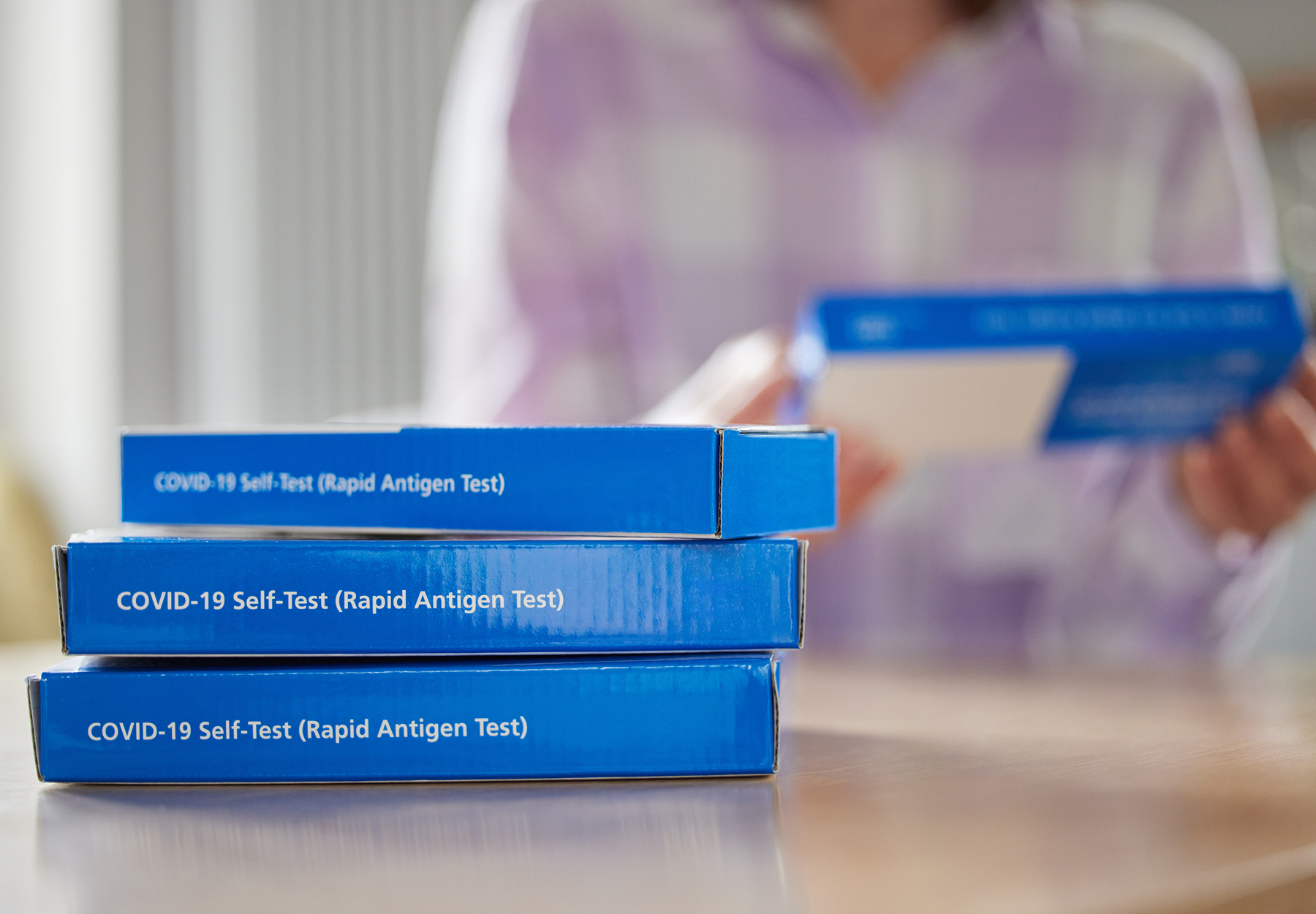Omicron Surge Creates Nationwide Shortage of COVID-19 Tests
Even before Omicron, demand for COVID-19 tests was on a major rise. The emergence of the new highly transmissible variant has now stretched testing supplies and capabilities to the breaking point. Drug stores and major retailers are sold out of rapid, point of care antigen tests. Lines for PCR tests stretch around the block in many cities across the country. While government help is on the way, especially on the rapid test front, shortages are likely to last well into the new year. The COVID-19 Test Shortage It’s hard to believe that a year ago at this time, vaccines were being rolled out and many manufacturers were scaling down their COVID-19 capacities to focus on normal core business. But the recent outbreaks have created the kinds of shortages and pressures on testing supplies that existed in the early months of the pandemic. And it’s going to get worse before it gets better. At its peak, roughly 2.4 million COVID-19 tests were performed in the US each day, according to the Department of Health and Human Services (HHS). But, because Omicron is spreading more rapidly than expected, the agency estimates the need for tests to reach between 3 and 5 million […]

The COVID-19 Test Shortage
It’s hard to believe that a year ago at this time, vaccines were being rolled out and many manufacturers were scaling down their COVID-19 capacities to focus on normal core business. But the recent outbreaks have created the kinds of shortages and pressures on testing supplies that existed in the early months of the pandemic. And it’s going to get worse before it gets better. At its peak, roughly 2.4 million COVID-19 tests were performed in the US each day, according to the Department of Health and Human Services (HHS). But, because Omicron is spreading more rapidly than expected, the agency estimates the need for tests to reach between 3 and 5 million tests per day by early February. Of course, pressure on COVID-19 testing capacity is nothing new. Supply shortages have bedeviled COVID-19 testing from the moment the public health emergency (PHE) began as the pandemic exposed the fundamental flaws and lack of coordination of the national testing “system,” and produced shortages in key supplies, raw materials and, above all, health care workers. The situation seemed to have stabilized earlier this year. As case rates fell and vaccination rates climbed, government and health leaders began to look to the future. The basic strategy: Promote widespread distribution and utilization of rapid antigen tests providing results in 15 minutes or less for preventive screening at home while reserving gold standard PCR molecular testing performed by offsite labs for symptomatic cases. But the one-two-punch of Delta and Omicron has overwhelmed the system and disrupted supplies of both kinds of tests.At-Home PCR Tests Are Available but Expensive
While most COVID-19 rapid tests are antigen tests that detect the antigens secreted by antibodies the body creates to fight the virus, there are also at-home tests that use more accurate PCR molecular technology to directly detect SARS-CoV-2 RNA. But at-home molecular test kits are also more expensive. For example, Cue Health’s Cue Reader costs $250—and that’s just for the reader. A three-pack of tests will set you back $225. Detect offers a cheaper starter kit containing one PCR test and a reusable hub at about $75 with additional tests selling at $50 a pop.The Federal Response
Unlike its predecessor, the Biden administration has made widespread lab testing, particularly rapid testing, a centerpiece of its COVID-19 response strategy. This September, the president outlined a broad action plan providing for accelerated development and use of rapid and at-home tests. Drawing on the federal government’s powers to mobilize private industry under the Defense Production Act (DPA), the plan included government purchase of nearly $2 billion worth of rapid point-of-care and over-the-counter (OTC) at-home tests—280 million total tests—from multiple manufacturers. To expand test access, the plan also promoted cooperation with private business, including major retailers Walmart, Amazon and Kroger for the sale of at-home rapid COVID-19 tests to consumers at cost for three months. In addition, the government mandated that states’ Medicaid cover at-home tests for free and not establish “arbitrary barriers” to those seeking care. Meanwhile, the FDA has played a role by providing Emergency Use Authorization (EUA) for eight different OTC COVID-19 tests, including five since the administration published its September action plan. There were no such tests on the market when the administration took office.The New Private Payor Coverage Mandate for Rapid Tests
On Dec. 2, the Biden administration took additional steps to promote wider use of at-home COVID-19 testing in response to Omicron. Among other things, the new plan requires private health insurers to cover 100 percent of the cost of at-home tests purchased by plan members. Individuals who purchase OTC COVID-19 diagnostic tests will then be able to seek reimbursement from their group health plan or health insurance issuer and have insurance cover the cost for the remainder of the public health emergency. Limitation: Tests purchased before the policy takes effect won’t be covered retroactively. HHS is expected to issue guidance on which tests should be covered and at what frequency in mid-January. The Biden plan includes other measures designed to quadruple the number of rapid, at-home COVID-19 tests available, as compared to late summer, including by:- Adding $1 billion to the previous $2 billion outlay for rapid tests;
- Making free rapid, at-home COVID-19 tests available to individuals without private insurance that can be picked up at locations like rural clinics and community health centers and then used at home; and
- Doubling its September commitment to distribute free tests to community sites from 25 million to 50 million.
Subscribe to view Essential
Start a Free Trial for immediate access to this article